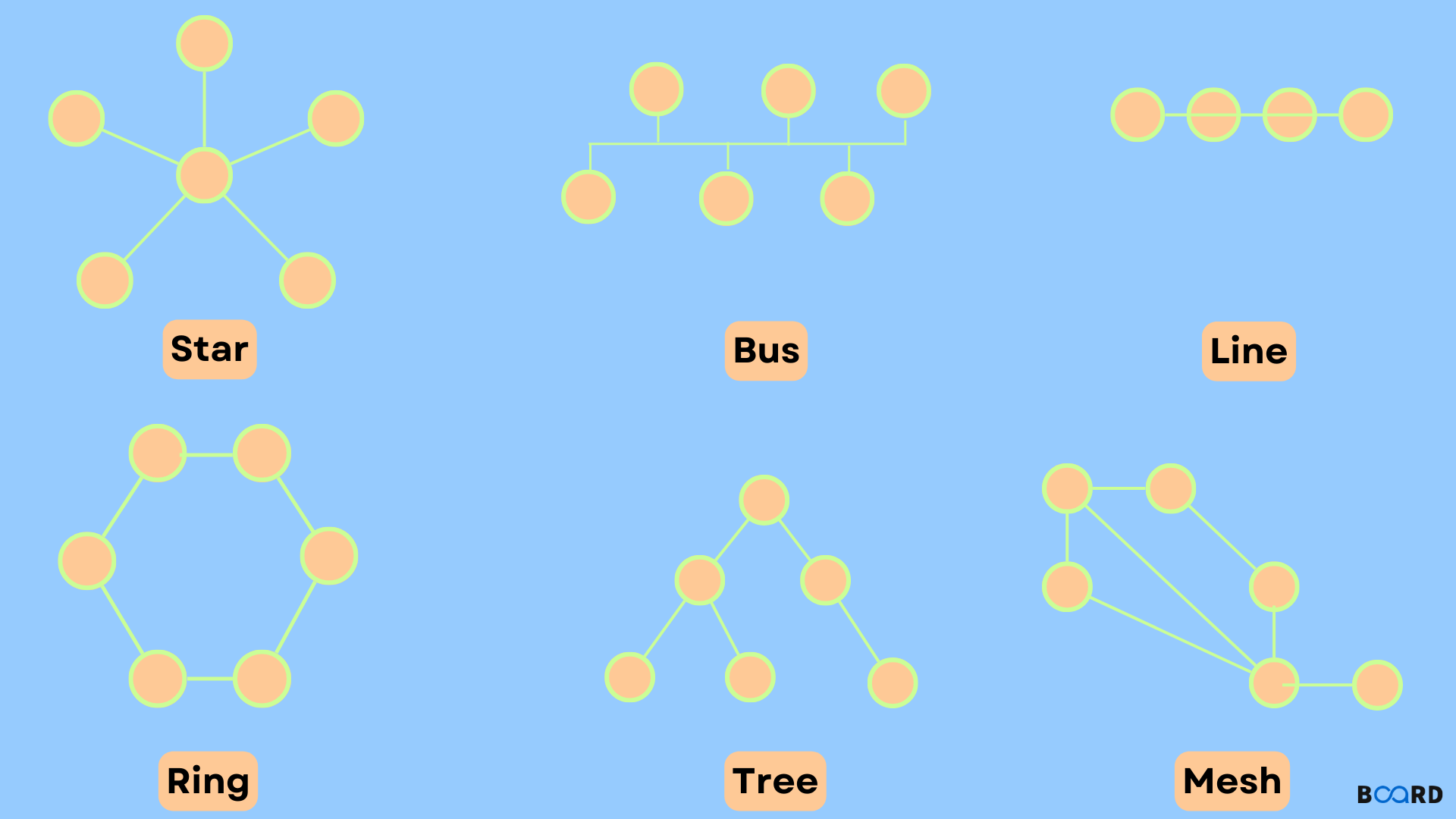Introduction to Computer Networking
Network Topology

Introduction
The configuration of how computer systems or network devices are connected to one another is known as a topology. Topologies can specify a network's logical and physical aspects. A network may have the same or dissimilar logical and physical topologies.
Point-to-Point
A single length of wire connects exactly two hosts, such as servers, switches, or computers, in a point-to-point network. The sending end of one host is frequently linked to the receiving end of another, and vice versa.
If the hosts are logically connected point-to-point, then there might be several intermediate devices. However, the end hosts perceive one another as though they are directly connected and are not aware of the underlying network.
Bus Topography
All devices in a bus topology share a single communication line or cable.
Bus topology may encounter issues when several hosts are sending data at once. Therefore, to address the problem, Bus topology either uses CSMA/CD technology or designates one host as Bus Master. It is one of the straightforward networking models where a device's failure has no impact on the other devices. However, if the shared communication channel fails, all other devices could become inoperable.
The shared channel has line terminators at both ends. The data is only sent in one direction, and the terminator cuts the line off when the data reaches the very end.
Star Topology
In a star topology, every host is connected via a point-to-point link to a central component called the hub device. In other words, the hosts and hub are connected point to point. Any of the following can serve as the hub device:
- Device at Layer 1 such as a hub or repeater
- Device at layer two, such as a switch or bridge
- Device at layer 3 such as a router or gateway
Hub functions as a single point of failure, similar to Bus topology. If the hub fails, none of the hosts are able to connect to any other hosts. The hub is the only channel via which hosts can communicate with one another. The cost of using a star topology is low because just one cable is needed to connect an additional host, and configuration is straightforward.
Ring Topology
Each host machine in a ring topology links to exactly two more hosts, resulting in a circular network structure. Data passes via all intermediate hosts if one host tries to communicate with or send a message to another host that is not nearby. The administrator may simply require one more cable to connect one more host to the current structure.
Any host failure causes the entire ring to fail. Every link in the ring is a potential weak point as a result. There are techniques that use a second backup ring.
Mesh Topology
A host is connected to one or more hosts in this form of architecture.
Hosts in this topology may be connected point-to-point to every other host or they may only be connected point-to-point to a small number of hosts.
Tree Topology
This type of network structure, also referred to as hierarchical topology, is the most popular one currently in use.
This topology mimics an extended Star topology and inherits bus topology characteristics.
The network is divided into several tiers or layers by this topology. A network is divided into three different types of network devices, primarily in LANs. The access-layer, to which computers are connected, is the lowest. The distribution layer, which sits between the top and lower layers, is the middle layer. The core layer, which is the topmost layer and the layer from which all nodes fork out, serves as the network's central node.
